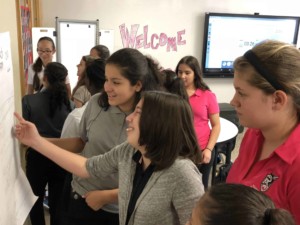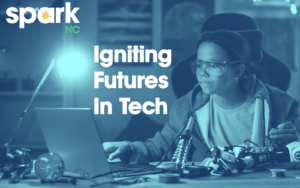Edtech Companies Must Place Learning Ahead of Revenue and Engagement
Key Points
-
Edtech platforms could play a key role in shaping the educational outcomes of our students.
-
It’s essential they prioritize and actively measure how effective their tools are in driving learning gains, and who their tools are effective for.

By: Joshua Ling
COVID-19 forced many teachers and administrators unfamiliar with education technology (or who were in the early stages of its adoption) to embrace and employ it rapidly. Using a “lift as you climb” approach that played out in classrooms across America, and around the world during the pandemic, education technology forged its place into curriculums today and moving forward.
Edtech companies, however, must now do their part to support the educators, school districts, and students that worked to incorporate online platforms and learning on such a large scale. As policymakers and educators prepare to increasingly fund this new frontier in education, it is up to the edtech community to provide tangible support strategies and benefits that will continue to foster its successful integration in schools.
In order to meet the challenge of the moment, edtech companies need to do three things:
First, companies that are building learning tools should ensure that their products are fundamentally grounded in education research. For example, there are various strategies that have been proven by learning scientists to be highly effective for student learning, such as spacing, interleaving, and retrieval. Companies should make sure their products leverage these strategies, and be transparent about how their products implement them.
Second, edtech companies should measure how well they improve student learning. Currently, edtech companies often prioritize the metrics that other tech companies traditionally value, such as user engagement and revenue growth.
However, these metrics often don’t correlate to student learning, and edtech companies have a moral obligation to care about more than those metrics. These platforms could play a key role in shaping the educational outcomes of our students, so it’s essential that they prioritize and actively measure how effective their tools are in driving learning gains, and who their tools are effective for.
Justin Reich, an educational researcher at MIT, said in his book Failure to Disrupt:
An easy way to tell if an ed tech developer is serious about improving learning and not just hoping to extract dollars from the education system is to see how they participate in research studies with a real chance of showing that their products do not work.
Justin Reich
Finally, edtech companies should work closely with learning scientists in order to advance the field. In other words, companies should not only center their products around research-backed practices, but also actively work to help scientists run studies, design experiments, and learn more about how we can improve learning for all students.
There are multiple ways to do this. First, when companies measure their products’ efficacy, they should make their datasets publicly accessible to researchers. Then, they should go one step further and actively design their platforms to enable researchers to run experiments and studies. DuoLingo and ASSIStments are great examples of organizations who both make their data publicly accessible and also work with researchers to allow them to run experiments on their platforms.
This school year, the US federal government plans to provide $122 billion in funding to K-12 schools, and edtech companies stand to make large profits off of this infusion of COVID relief funding. Historically, large investments in edtech products have not translated into transparent and provable learning gains among students. At this moment, we cannot afford to make those same mistakes, so we have to take an evidence-based, science-first approach to building edtech tools for our students.
Posdie is a nonprofit edtech company working to bridge the gap between learning science and K-12 classrooms. It has a free web tool for teachers and students to easily implement research-backed techniques, such as spacing, interleaving, and retrieval into their day-to-day classroom routine. Podsie was inspired by my own experience as a teacher. I faced challenges that I thought were unique, only to discover later that learning scientists had solutions for them. For example, my students often struggled to retain the content that they learned in my class, and it turned out that learning scientists had produced decades of research that prescribed the best way to help students retain information.
My classroom, unfortunately, was not consistently centered around evidence-based approaches, and so now, at Podsie, we’re trying to create a world where all educators have access to learning science best practices and can easily apply them in their classrooms.
So far, we’ve created a web tool that is centered around the science of learning. We’ve run a small-scale experiment to measure the efficacy of our tool (we need to collect more data, but early returns show promise).
To create this tool, we began by using two research-backed strategies, spacing and retrieval, to tackle the same challenge my students struggled with: long-term content retention. Our web tool was inspired by a study from 2014, where researchers created software that combined spacing and retrieval to personalize review for students. Students from this study showed an average 16.5% increase in content retention through “personalized” spaced review compared to traditional review practices.
Our current goal at Podsie is to allow all K-12 teachers to utilize that personalized spaced review method. In the long run, we plan to implement other research-backed strategies into our tool to further empower teachers and improve student learning outcomes.
We’ve also partnered with learning scientists from Carnegie Mellon University and The University of Memphis on the design of our platform so as to allow external researchers to run experiments on it.
Despite our progress, we clearly still have significant work to do. Today, I’m writing not from a pedestal, but rather a position of humility asking others to join us on this journey to become companies that are always evidence-based, accountable to student learning outcomes, and leaders in pushing forward the field of learning science.
Joshua Ling is a former 8th Grade middle school teacher and the Co-Founder of Podsie.





0 Comments
Leave a Comment
Your email address will not be published. All fields are required.